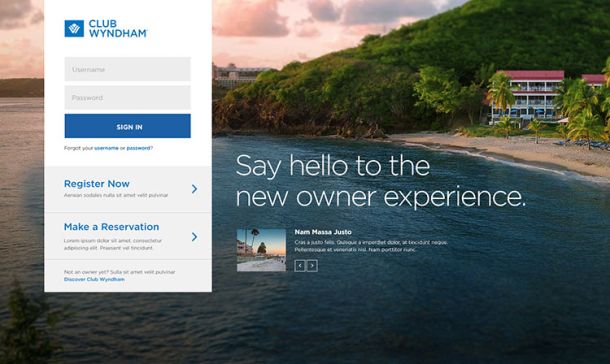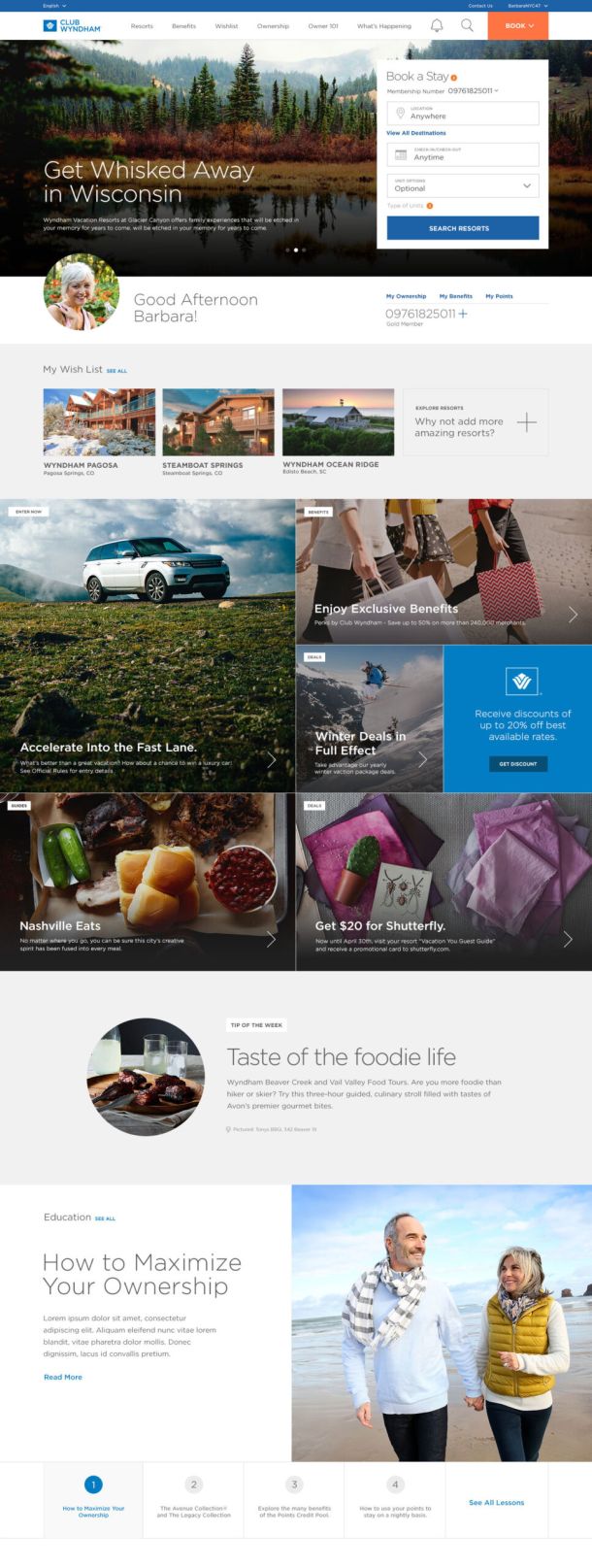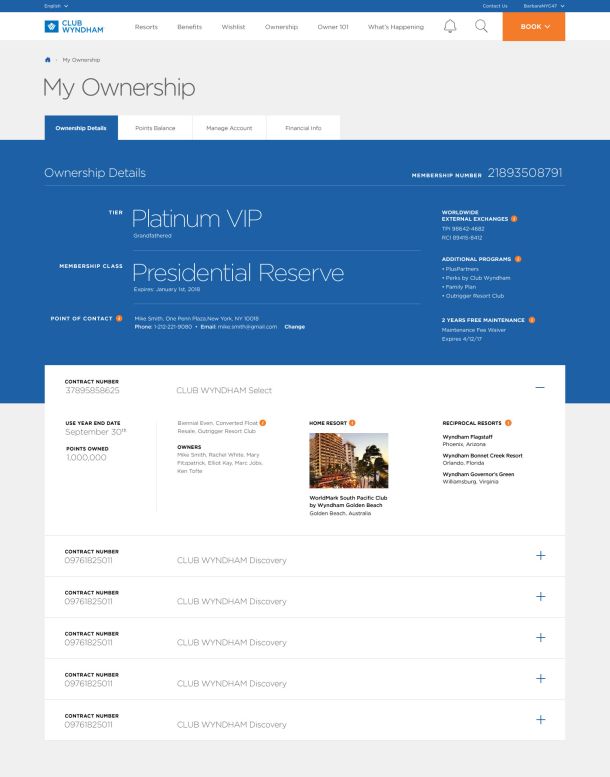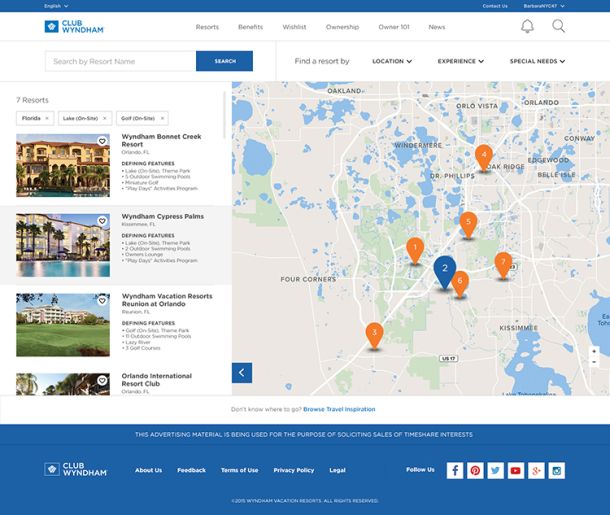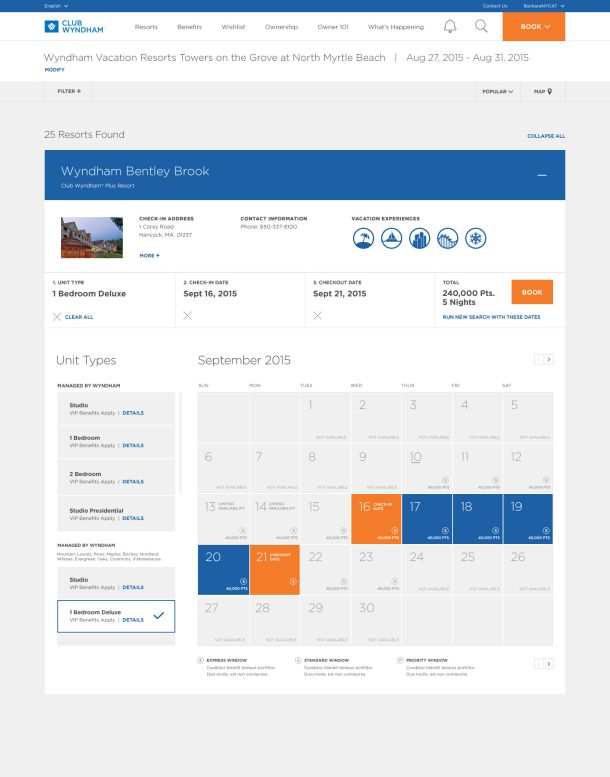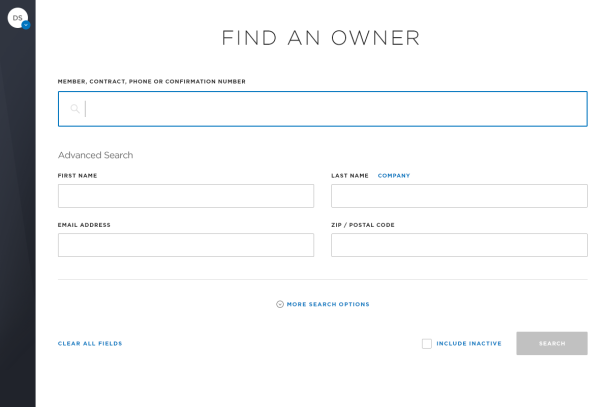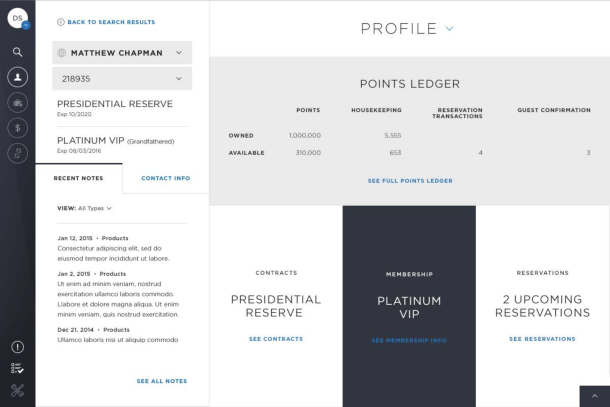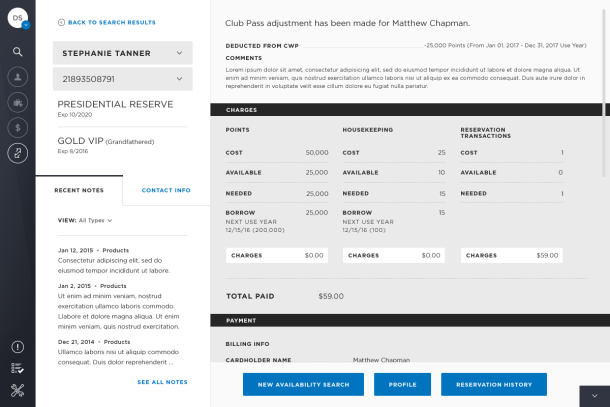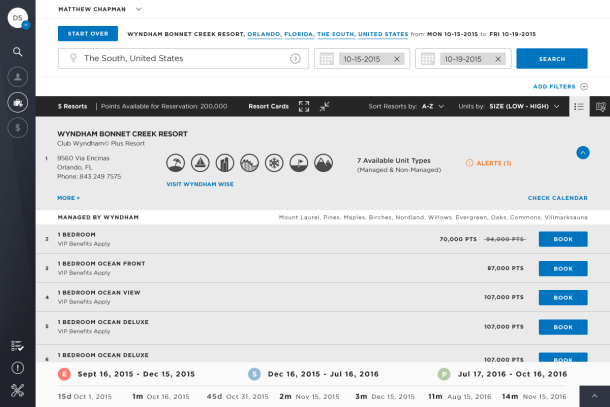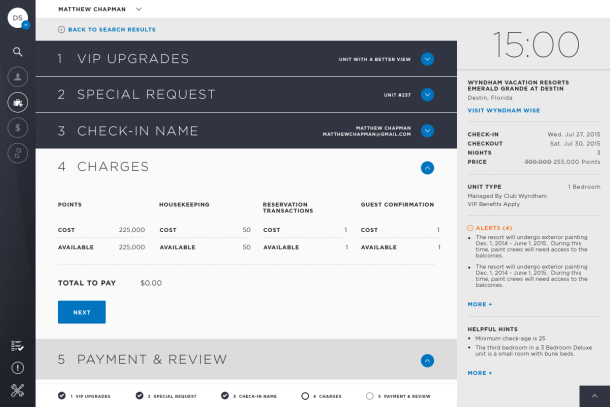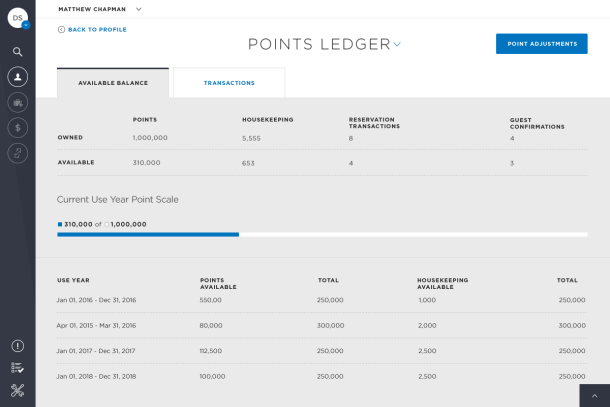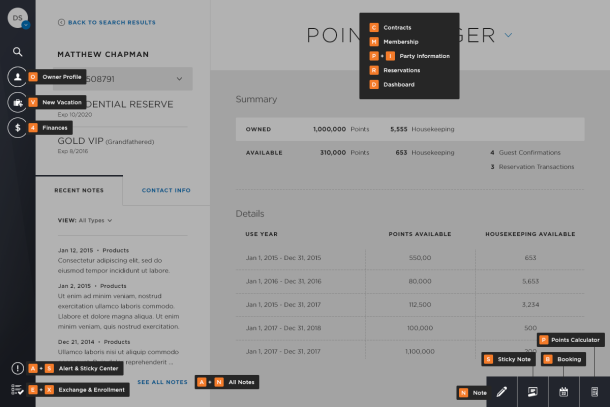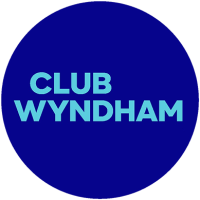
Wyndham Voyager
The ask
Design a unified and scalable timeshare ownership platform serving both timeshare owners and call-center customer service agents
Wyndham Vacation Ownership (WVO), now known as Travel + Leisure Co, is the largest timeshare company on the planet with more than 245 resorts worldwide.
Operating since 1990, WVO had acquired several timeshare companies in pursuit of its rich destination portfolio. As a result, they also had complex suite operational platforms making it frustrating for timeshare owners and customer service agents (serving owners through a call center) to book a stay at a resort.
Rokkan was approached to completely unify their technology ecosystem supporting the owner experience. This coincided and supported sweeping changes to their overall vacation ownership program: transforming from a rigid one-week, one resort experience to a points based, access to all resorts, anytime experience. Our remit was to build a two-platform experience, 1) facilitating call-center agent operations with a SAAS (service as a software) application named TRIP, and, 2) a web-based owner portal, named Customer User Interface (CUI).
Our work with Wyndham reflected an impactful 4+ year journey that oversaw fundamental change to both the company as well as the timeshare owner experience.
Deliveries
- Digital ecosystem for multiple use cases
- Information Architecture
- Operational Plaform (SAAS)
- Responsive web site
Wyndham Vacation Ownership
Information Architecture & UX Design
Experience Design Director
2015 – 2020
Two platforms for two use cases
-
Jump To
Per our remit, Project Voyager called for two dedicated platforms that we were to design, build and optimize over the next several years:
Consumers
CUI
Timeshare Owners
Our end user, the consumer
Agents
TRIP
Call Center Agents
Our super-user, the customer service provider
Platforms
Responsive web desktop portal
SAAS intranet for workstations
Core Use Cases
- Reservations
- Resort Search & Brochures
- Ownership Handbook & Wiki
- New Owner Startup Guide
- Customer Concierge
- Payment Portal
- Account Management
- WVO News & Updates
- Reservations
- Contract Management
- Payments
- Owner Search & Intelligence
- Agent Intelligence
- Currency (points) management
- Membership Management
- Keystroke UI
Deconstruct to reconstruct
My first and most fundamental task was to catalog the four legacy apps (two which used an MS-DOS-like command-line interface, that’s how old they were!).
I accounted for a complete set of operational functions available to call center agents through those apps, then took it all a part, bit-by-bit. Subsequently, I then re-architectured it all, from the ground up as one operational platform.
Out of this re-architecture effort, I built an intimate understanding of how each of Wyndham’s resort collections were managed. More importantly, I had mission-critical knowledge of how both owners and WVO’s customer service teams managed owner accounts and booking processes — which at the time was beyond convoluted.
The great challenge here was that timeshare companies that had been merged into WVO had their own unique sets of functions incorporated into these apps, which made for an incredibly disorganized function set.
After a good 3 weeks of scavenger hunting, sorting, confirming with clients and then re-sorting, I produced one of the most extensive functional and architecture maps that the team would use as a base for to solution against for next several years of work.
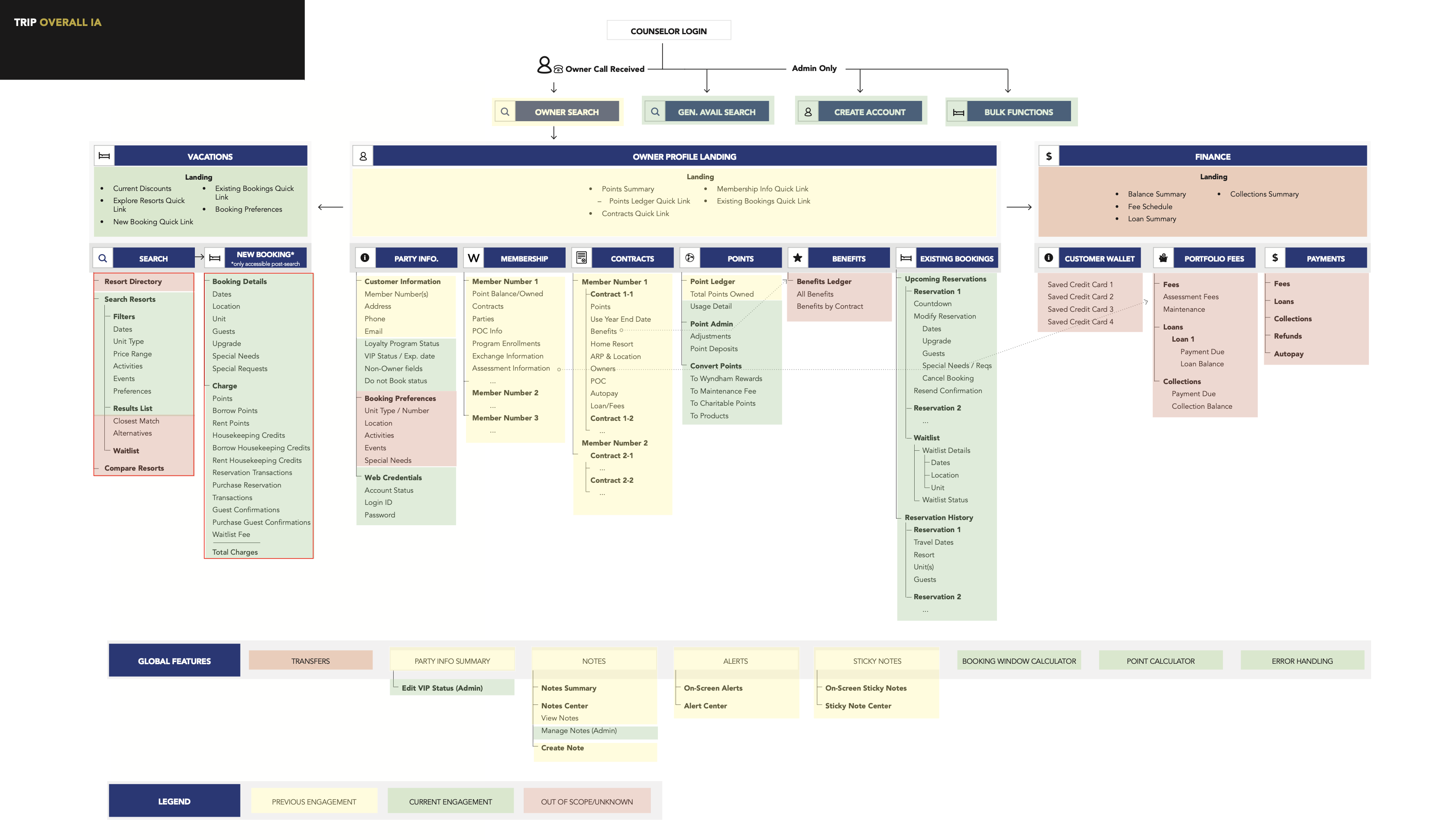
Presenting the unified architecture required nearly two days to workshop — walking through, verifying with the client team — and achieve sign off. One of my proudest moments was Sandy, our executive stakeholder, just sitting in awe of the work.
“I don’t even know how you even attempted this and succeeded! I’m nearly in tears. We’ve tried for years to do what you’ve done in the span of weeks.”
Sandy H., VP Customer Service and WVO Team Lead
Outcomes
-
+41,500
BookingsIncremental bookings over the first 6 months of CUI’s launch with a 10% net increase in usage within 30 days of go-live.
-
-1 week
Training TimeReduction in training for customer service agents, from 5 to 4 weeks.
-
10% faster
Call Times10% reduction in call-handle times for newly hires and trained agents OVER tenured call agents on the legacy agent system (ecosystem).
Director’s Notes
-
Sweat in sunny Orlando
During the tenure of the CUI/TRIP project, and in-service of a hybrid agile-waterfall hybrid process, my team traveled to Orlando up to two (sometimes three) times per month. Together with clients, we solutioned side-by-side during two day workshops at WVO HQ where we’d come prepared to present both UX and Creative for that sprint.
Day 1 of our workshops were our UX days, presenting wireframes designed over the course of the prior two weeks. We’d engage in a full-day workshop, interrogating the work with a room packed with 15-20 people (5 consisting of myself and the Rokkan team) with representation across WVO’s business groups: marketing, operations, IT/dev, customer service, et al. At the close of the day 1, we’d have stacks of notes for feedback to bring back to our hotel to prepare for day 2.
Evenings on Day 1 could be grueling, UX and UI team members would collaborate to incorporate feedback for our creative presentations bright and early the next morning. Our Creative Director, Brian Barenio, on various trips could easily be up into the wee hours completing and polishing our finished work for presentation on Day 2.
-
Growing the account
TRIP and CUI were a multi-year endeavor for Rokkan and Wyndham, completing the design phase required almost 20 sprints! And yet, that was only the opener for the Rokkan team as the account grew well beyond the scope of Voyager. Across the next few years, we conducted several rounds of user testing and optimization; defined a content strategy for them; business for Rokkan x Wyndham grew beyond experience and platform work as well as the agency began to take on media accounts.
Similar Projects


